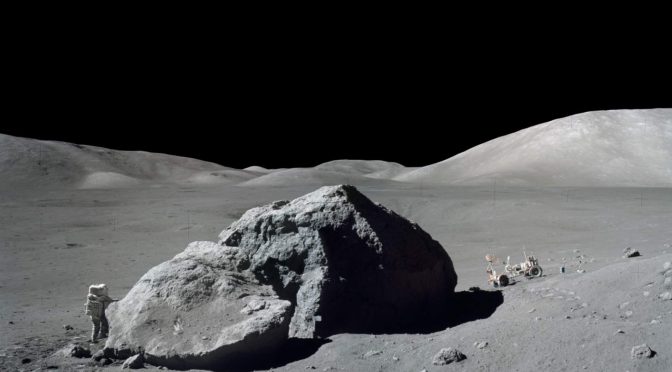For the 45th anniversary of the Apollo 17 lunar landing mission, NASA has published a website called “Apollo 17 in Real-time. The Last Mission to the Moon – A Real-time Journey through the Apollo 17 mission”. You can see the events in real-time either joining at 1 minute before the launch or in progress.
On the website apollo17.org, you can access over 300 hours of audio, over 22 hours of video, and over 4,200 photos, and relive every moment as it occurred in 1972.
Apollo 17: The Last Moon Landing Mission
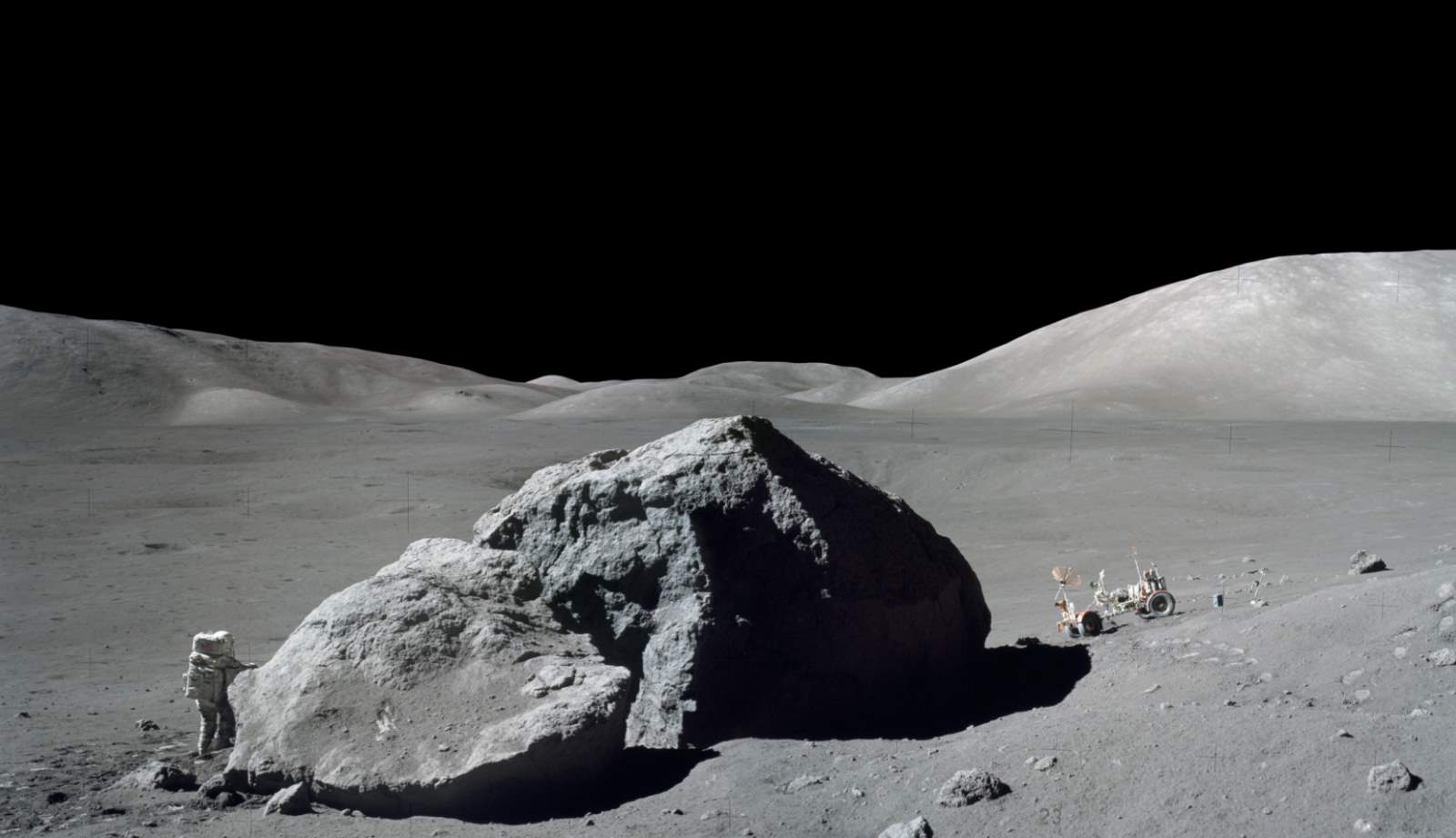
In the image, Schmitt is standing next to “Tracy’s rock”, a large boulder on the Moon named after Cernan’s daughter Tracy, who was nine years old at the time of the mission
Apollo 17 was the eleventh and the last crewed space mission in the NASA Apollo program. It was the first night launch of a U.S. human spaceflight and the sixth and final lunar landing mission. The mission was launched at 12:33 a.m. EST on December 7, 1972, and concluded on December 19.
Apollo 17 was also the last time humans traveled beyond low Earth orbit. The mission broke several records: the longest moon landing, longest total extravehicular activities (moonwalks), largest lunar sample, and longest time in lunar orbit.
Scientific objectives of the Apollo 17 mission included geological surveying and sampling of materials and surface features in a preselected area of the Taurus-Littrow region; deploying and activating surface experiments, and conducting in-flight experiments and photographic tasks during lunar orbit and trans-earth coast.
These objectives included deployed experiments, such as the Apollo Lunar Surface Experiments Package, or ALSEP, with a heat flow experiment; lunar seismic profiling, or LSP; the Lunar Surface Gravimeter, or LSG; lunar atmospheric composition experiment, or LACE; and lunar ejecta and meteorites, or LEAM. The mission also included lunar sampling and lunar orbital experiments. Biomedical experiments included the Biostack II experiment and the BIOCORE experiment.
The Blue Marble
On December 7, 1972, the crew of the Apollo 17 spacecraft took a photo of Earth from space, at a distance of about 45,000 kilometers (28,000 miles). This image, with the official NASA designation AS17-148-22727, became known as “The Blue Marble“.
In fact, it was not the first clear image of Earth taken from space – similar photos had already been taken as early as 1967. But, the 1970s were the scene of a big surge in environmental activism. For example, on April 22, 1970, the first “Earth Day” was organized by Gaylord Nelson, former senator of Wisconsin, and Denis Hayes, Harvard graduate student. Millions of people gathered in the United States for the event.
So, in today’s terms, image AS17-148-22727 went “viral” and became a symbol of the environmental movement, as a depiction of Earth’s frailty, vulnerability, and isolation amid the vast expanse of space. According to NASA archivist Mike Gentry, it is among the most widely distributed images in human history.
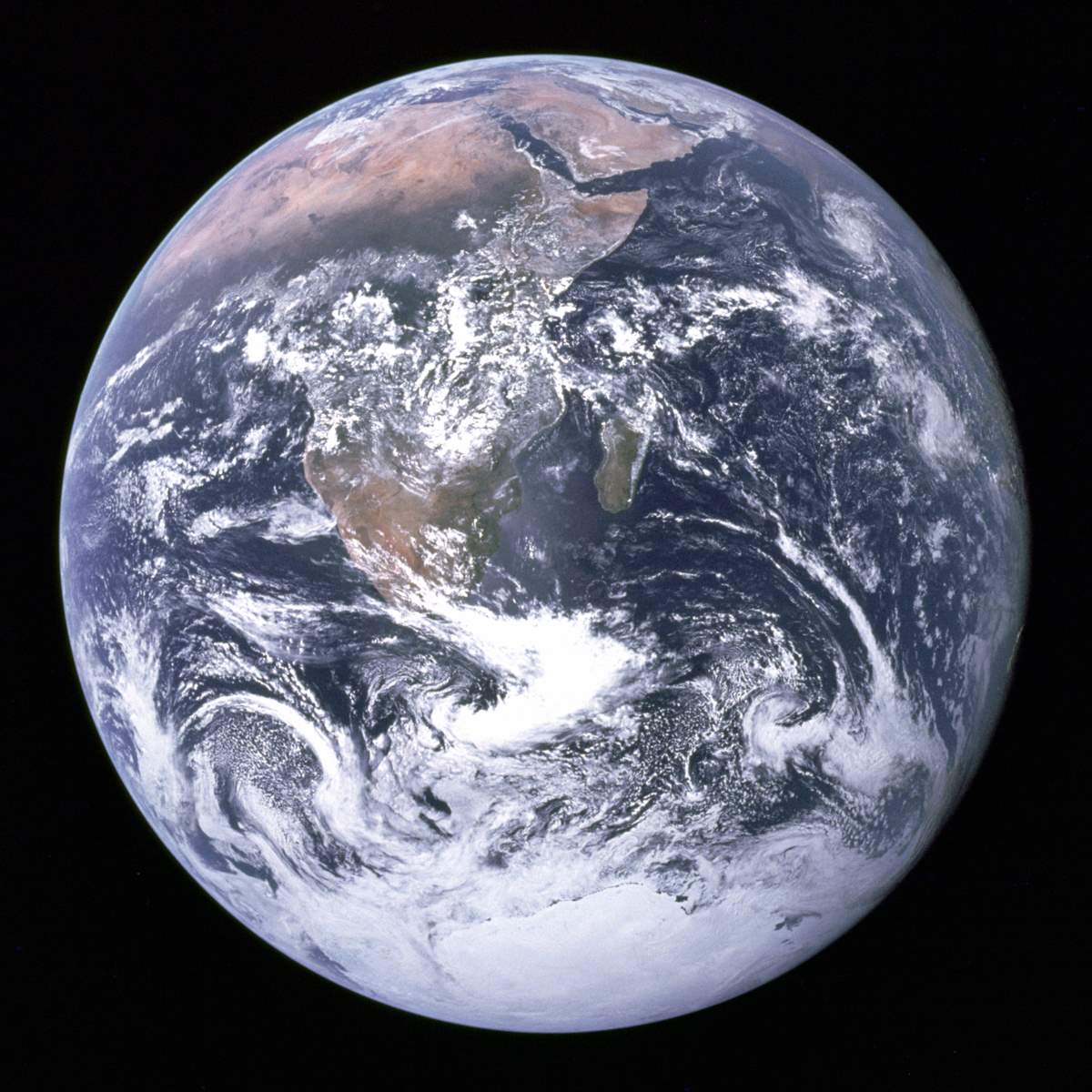
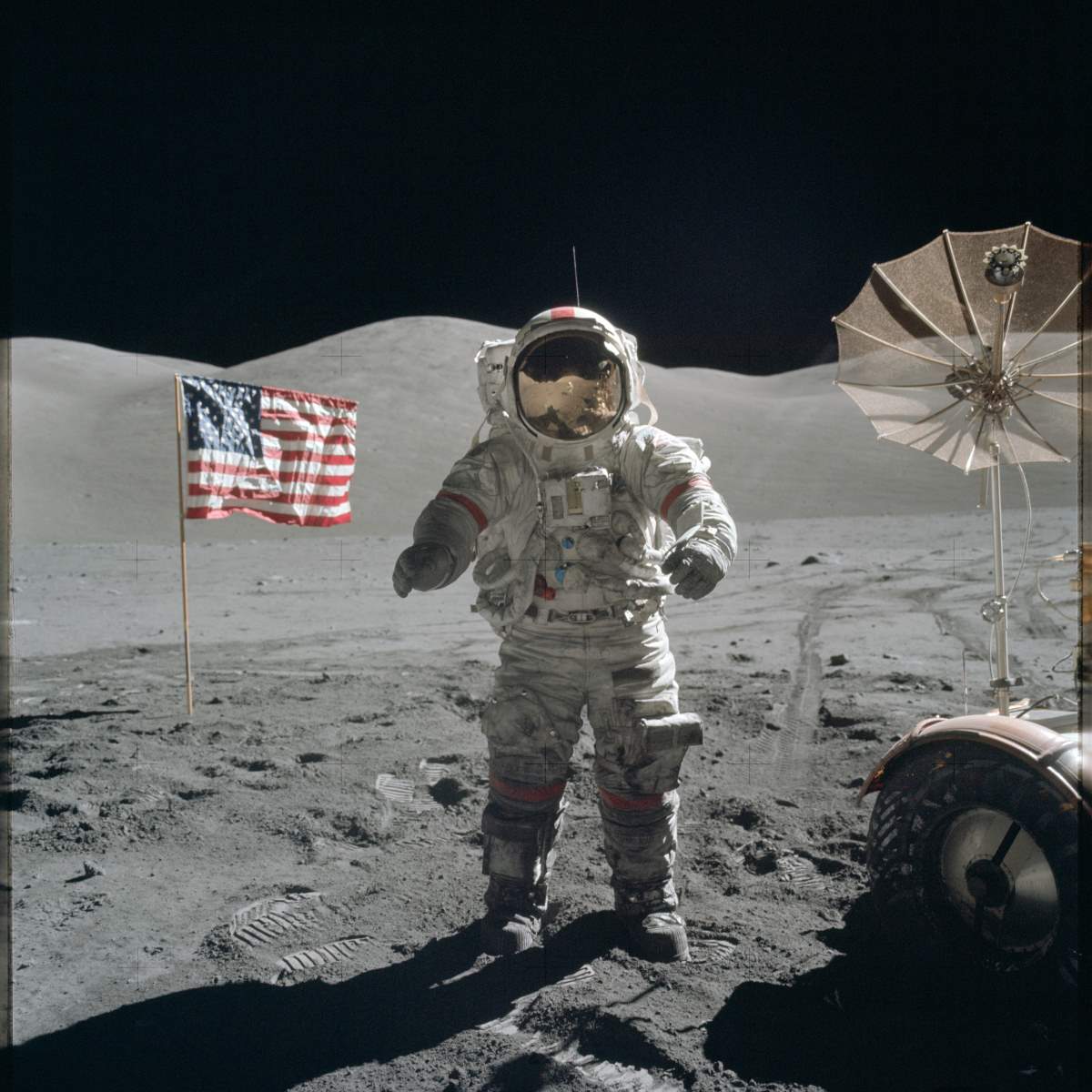
Apollo 17 Crew
- Commander: Eugene A. Cernan, Third, and last spaceflight
- Command Module Pilot: Ronald E. Evans, Only spaceflight
- Lunar Module Pilot: Harrison H. Schmitt, Only spaceflight
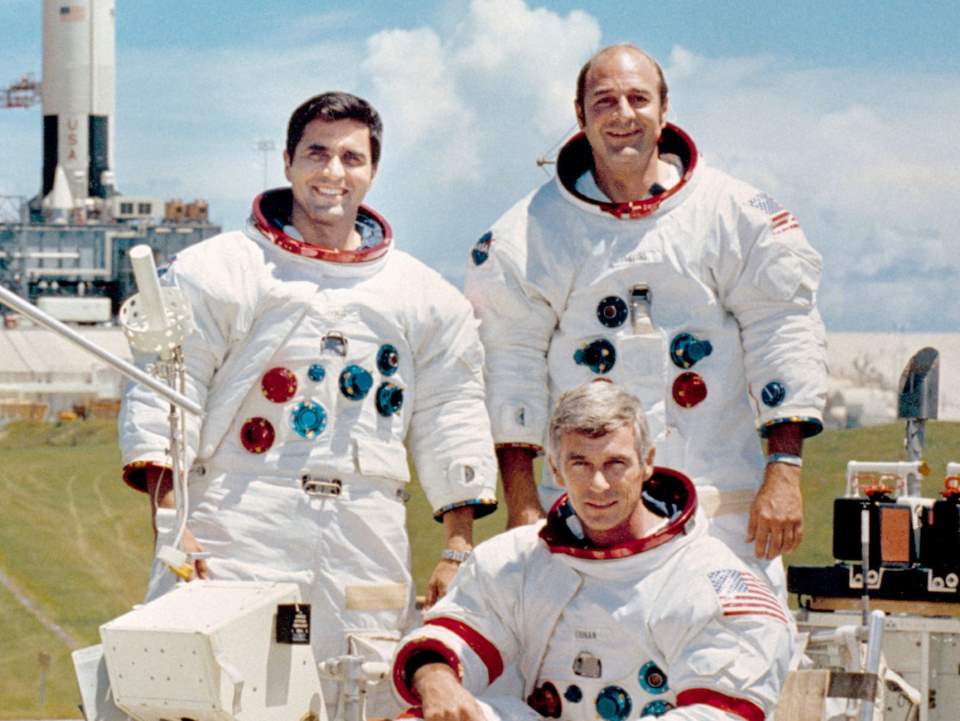
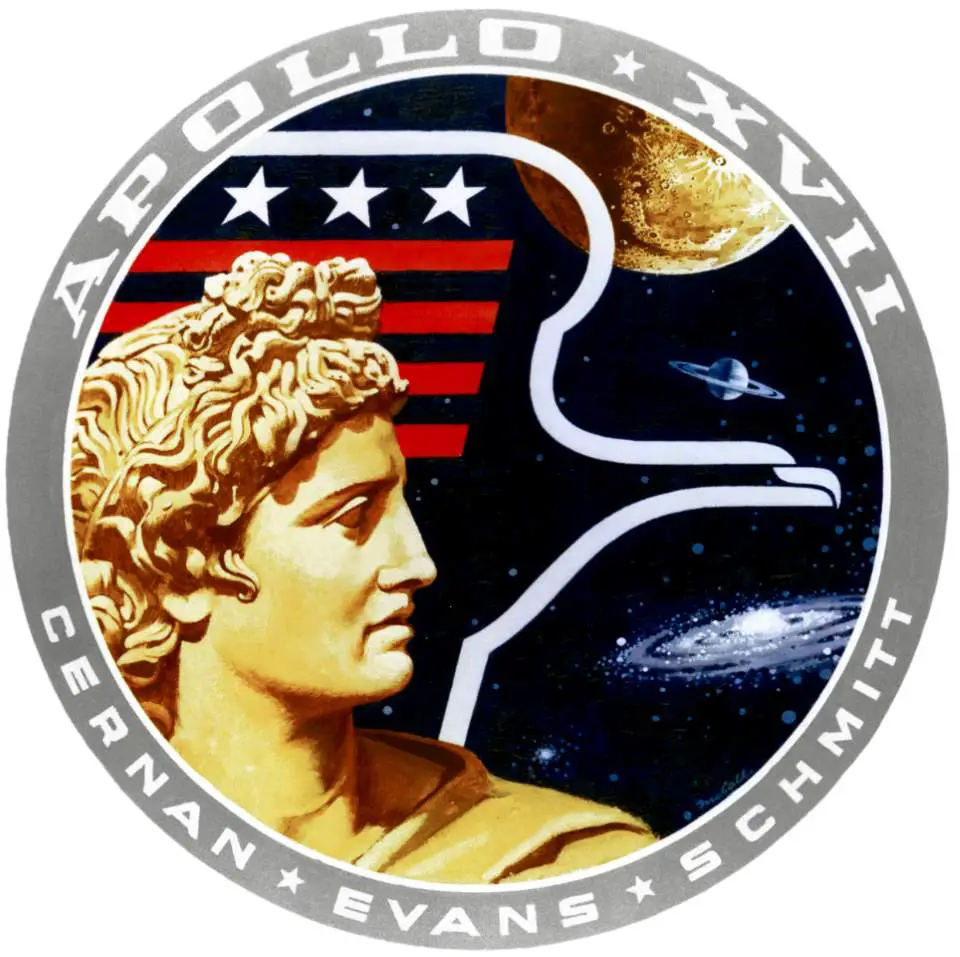
Sources
- Apollo 17 on Wikipedia
- Apollo 17 on the NASA website
- Tracy’s Rock on Wikipedia
- Moon Landings: All-Time List [1966-2025] - February 2, 2025
- What Is Max-Q and Why Is It Important During Rocket Launches? - January 16, 2025
- Top 10 Tallest Rockets Ever Launched [2025 Update] - January 16, 2025
